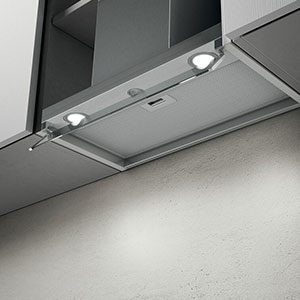Cooker hoods, revered for their ability to whisk away cooking odors and airborne particles, play a pivotal role in maintaining a fresh and comfortable kitchen environment. However, a common query arises: Do cooker hoods need to be vented outside? In this article, we’ll delve into the considerations surrounding cooker hood ventilation and explore the advantages and drawbacks of both vented and ductless configurations.Cooker hoods, revered for their ability to whisk away cooking odors and airborne particles, play a pivotal role in maintaining a fresh and comfortable kitchen environment. However, a common query arises: Do cooker hoods need to be vented outside? In this article, we’ll delve into the considerations surrounding cooker hood ventilation and explore the advantages and drawbacks of both vented and ductless configurations.
**1. Vented Cooker Hoods: Efficient Air Extraction- Vented cooker hoods, also known as ducted or external venting hoods, operate by expelling air to the outside environment through a duct or vent. This configuration offers efficient removal of cooking byproducts, including smoke, steam, and grease, ensuring optimal indoor air quality.
- Advantages:
- Effective removal of cooking odors and pollutants.
- Prevents the buildup of grease and moisture in the kitchen.
- Maintains a cooler and more comfortable cooking environment.
- Minimizes the risk of indoor air pollution and respiratory irritants.
- Considerations:
- Requires professional installation to create an outlet for the duct.
- May involve additional construction work, especially in existing kitchens.
- Dependent on the availability of exterior wall space for vent placement.
- Ductless cooker hoods, also known as recirculating hoods, filter and recirculate air back into the kitchen after capturing cooking by products. These hoods typically contain activated charcoal or carbon filters to trap odors and grease particles before releasing the purified air back into the kitchen.
- Advantages:
- Flexible installation options, suitable for kitchens without access to external vents.
- Minimal construction requirements, making them ideal for retrofitting existing kitchens.
- Can be installed in apartments or multi-story buildings where exterior venting may not be feasible.
- Easy to install and requires less initial investment compared to vented hoods.
- Considerations:
- Less efficient in removing pollutants compared to vented hoods.
- Regular filter maintenance is required to ensure optimal performance.
- Recirculated air may lead to a gradual buildup of grease and odors in the kitchen over time.
In Conclusion: The decision between vented and ductless cooker hoods depends on various factors, including kitchen layout, ventilation requirements, and personal preferences. While vented hoods offer superior air extraction capabilities, ductless hoods provide flexibility in installation and are suitable for spaces where exterior venting is impractical. Ultimately, prioritizing proper ventilation ensures a healthier and more enjoyable cooking experience in your kitchen.



